Enschede 作者: 来源: 发布时间:2021-04-23
一、所属省或是州,具体位置,人口,面积
Location in Overijssel
Coordinates: 52°13′N 6°54′ECoordinates: 52°13′N 6°54′E
Country Netherlands
Province Overijssel
Government
• Body Municipal council
• Mayor Onno van Veldhuizen (D66)
Area
• Municipality 142.72 km2 (55.10 sq mi)
• Land 141.00 km2 (54.44 sq mi)
• Water 1.72 km2 (0.66 sq mi)
Elevation 42 m (138 ft)
Population (Municipality, January 2019; Urban and Metro, May 2014)[5][6]
• Municipality 158,986
• Density 1,128/km2 (2,920/sq mi)
• Urban 158,004
• Metro 315,807
• Twente 626,586
Demonym(s) Enschedeër
Time zone UTC+1 (CET)
• Summer (DST) UTC+2 (CEST)
Postcode
7500–7549
Area code 053
Website www.enschede.nl
Enschede in the local dialect of Twents) is a municipality and city in the eastern Netherlands in the province of Overijssel and in the Twente region. The eastern parts of the urban area reaches the border with Germany. The municipality of Enschede consisted of the city of Enschede until 1935, when the rural municipality of Lonneker, which surrounded the city, was annexed after the rapid industrial expansion of Enschede which began in the 1860s and involved the building of railways and the digging of the Twentekanaal. The proposal for consolidation began in 1872, per the Turbantia newspaper article on 22 Jun 1872 that referenced a committee of 5 to oversea a study. They were: J. Mosman (Johannes Theodorus Mosman), H. Fikkert, H. G. Blijdenstein J. Bz., C. C. Schleucker, and G. J. van Heek.
In sports and culture, Enschede is perhaps best known for being home to football club FC Twente, one-time Dutch champions.

二、自然地理(地理环境、自然资源,交通情况)
Enschede lies in the eastern part of Overijssel and is the easternmost city of more than 140,000 inhabitants in the Netherlands. The city lies a few kilometres from Germany, which borders the municipality. A few small rivers flow through or surround the city, such as the Roombeek and Glanerbeek.

Dutch Topographic map of Enschede (city), June 2014
Enschede contains five official city districts ("Stadsdelen"). Note that they also include surrounding villages in the municipality:
Stadsdeel Centrum (Binnenstad, Boddenkamp, De Bothoven, 't Getfert, Hogeland Noord, Horstlanden-Veldkamp, Laares, Lasonder-'t Zeggelt)
Stadsdeel Noord (for example: Lonneker, Deppenbroek, Bolhaar, Mekkelholt, Roombeek, Twekkelerveld)
Stadsdeel Oost (for example: Wooldrik, Velve-Lindenhof, De Eschmarke, ’t Ribbelt, Stokhorst, Dolphia, ’t Hogeland and Glanerbrug)
Stadsdeel Zuid (Wesselerbrink, Helmerhoek and Stroinkslanden)
Stadsdeel West (Boswinkel, Ruwenbos, Pathmos, Stadsveld, Bruggert, ’t Zwering, ’t Havengebied, De Marssteden, Boekelo, Usselo and Twekkelo)
Climate
Like most of the Netherlands, Enschede features an oceanic climate (Cfb in the Köppen classification), however, winters tend to be less mild than the rest of the Netherlands due to its inland location. Although the former military airport is derelict and plans to revive the place were canceled in 2012, the Royal Netherlands Meteorological Institute still maintains a weather station there.
Transport

Enschede is a terminus station of the Nederlandse Spoorwegen (NS) railway lines from the west. Trains operate to Hengelo, Almelo, Zwolle, Deventer, Apeldoorn, Amersfoort Centraal, Hilversum, Amsterdam Zuid, Schiphol Airport, Utrecht Centraal, Rotterdam Centraal and Den Haag Centraal.
To the east there is a line to Gronau, Germany, which has two more stations in the Netherlands: Enschede De Eschmarke and Glanerbrug. The latter two have low ridership.[citation needed] The line is served by DB Regionalbahn Westfalen (part of the German Deutsche Bahn), to Münster and to Dortmund, each on an hourly interval and alternating half-hours in the service to Gronau.
There is no track connection between the two systems. The through line had been retained for eventual NATO use during the Cold War even after through passenger service was ended (September 1981), although it was in serious disrepair in later years. With the renewal of service to Germany (May 2001) the track was severed; there is a gap of about 30 centimeters between them.
There is also Enschede Kennispark railway station, near the football stadium.
Enschede is situated at the south-east terminus of the Twentekanaal. There is also a network of bus lines connecting nearly every part of the city with the centre. Enschede also has bus connections to nearby towns and cities, like Hengelo, Oldenzaal and south towards Haaksbergen, Neede and Eibergen. The city lines are operated by Syntus, under the Twents-branche. The interlocal lines are exploited by Syntus and Arriva.
Previously, Enschede had a combined regional civil airport, Enschede Airport, and Airbase Twenthe of the Royal Netherlands Air Force. The latter was closed in 2007; the former was closed in 2008.
三、经济发展和规模
The city is a former centre of textile production. When this industry left the area for cheaper production centers in South-East Asia, Enschede became one of the poorest municipalities in the Netherlands. More educated and wealthy citizens have historically migrated to the Randstad region; decades of renovation work in the city center have been carried out with the goal of making Enschede more attractive to this group.
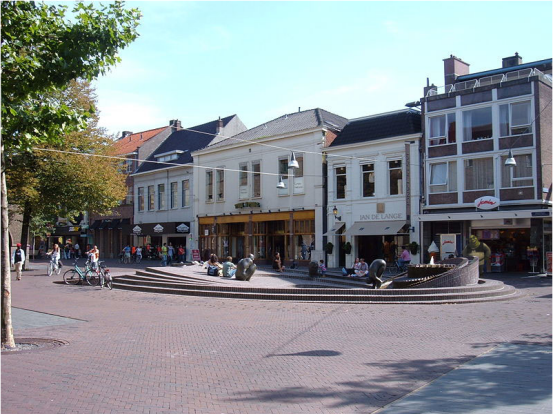
Het ei van Ko (Ko's egg) fountain
Modern shopping centers and department stores that until recently were only found in much larger cities have been opened. Enschede is host to many yearly festivals and the Old Market Square is often the venue for events, live music and other activities on the weekend.
The proximity to Germany has, historically, been another major factor in the city's economic activity, ranging from the smuggling of coffee and tobacco in the 19th and 20th century, to large numbers of Germans, who visit the city's shops and weekly markets. Therefore, many natives of Enschede speak German more or less fluently.
The city is co-operating with the nearby municipalities of Almelo, Borne and Hengelo as Netwerkstad Twente. A draft law plan to merge Enschede with Hengelo and Almelo was defeated in parliament under the influence of opposition from the other towns.
Grolsch beer is brewed in Enschede, and the tyre manufacturer Apollo Vredestein B.V. head office and a factory is in the city. It is one of the most important employers of the region.

四、产业特点/重点项目
Grolsch Brewery
Industry Alcoholic beverage
Founded 1615
Headquarters Enschede, Netherlands
Products Beer
Production output 3.2 million hectoliters
Owner Asahi Group Holdings
Website www.grolsch.com
Grolsch premium lager bottle with characteristic flip-top closure
Grolsch Brewery ,known simply as Grolsch is a Dutch brewery founded in 1615 by Willem Neerfeldt in Groenlo. In 1895 the de Groen family bought the brewery. They had started their own brewery in Cuijk the Netherlands in the early 19th century. It held a significant stake until November 2007. The main brewery is located today in Enschede.
It was awarded the Koninklijk (Royal) title in 1995. The Grolsch brand became a part of the SABMiller group in March 2008.
As part of the agreements made with regulators before Anheuser-Busch InBev was allowed to acquire SABMiller, the company sold Grolsch to Asahi Breweries in late 2016. The deal was expected to close during the first half of 2017.
Brief details:
The Grolsch brewery was founded in 1615 in Groenlo. The town of Groenlo was then known as Grolle, hence the name Grolsch, meaning 'of Grolle'. Grolsch is best known for its 5% abv pale lager, Grolsch Premium Pilsner. The brewery was first operated by Willem Neerfeldt. Neerfeldt's son-in-law, Peter Sanford Kuyper, later took over. Grolsch was, as of February 2006, the second largest[5] brewer in the Netherlands (after Heineken) with annual production of 320 million litres. The domestic market comprises fifty-one per cent of total production.
Tootal Fabrics (Holland) B.V.
Tootal Fabrics (Holland) B.V. has been successfully trading in textiles and hopes to continue to do so for decades to come.
Address: IJzersteden 3, 7547 TB Enschede, Netherlands
Phone: +31 53 428 6200
info@tootal.nl
https://www.tootal.nl/en
Tootal Fabrics (Holland) B.V. supplies clients with high quality fabrics. We deliver a wide range of fabrics for shirts, blouses and workwear to customers in more than 80 countries. With never out of stock services (N.O.S.), local agencies worldwide and experienced staff in all key disciplines, we meet your demand for creating the best possible fabric collection.
More than 45 years of experience
Long established and reliable partner in textiles since 1972.
Apollo Vredestein B.V.
Industry Tire
Founded Netherlands, 1909
Headquarters Enschede
Products Tires for car, agricultural and industrial applications and bicycles.
Revenue 994,000,000 US dollar (2007) Edit this on Wikidata
Net income
-243,000,000 United States dollar (2007) Edit this on Wikidata
Number of employees
1,800
Parent Apollo Tyres
Website www.apollovredestein.com
五、风景名胜,景点
Rijksmuseum Twenthe

The Rijksmuseum Twenthe in Enschede
The Rijksmuseum Twenthe in Enschede, the Netherlands, was founded in 1927 by textile industry Baron Jan Bernard Van Heek. He donated his own private collection and the museum building to the government, thus making it a national museum. The museum is situated in the quarter of Roombeek, 10 minutes on foot north-east from the railway station. It has a small gift shop and a cafe, but only poor car parking facilities, so visitors are advised not to come by car.
Throughout the decades, the museum has become focused on 18th-century art as well as contemporary works, with the collection of Art & Project, a former art gallery owned by Geert van Beijeren and Adriaan van Ravesteijn, as well as a large collection of animal paintings by Wilhelm Kuhnert, Carl Rungius and Bruno Liljefors. The museum also owns a large collection of 17th century (Jacob van Ruisdael and Salomon van Ruysdael) and 18th century works, medieval books and religious objects, and some paintings of late 19th century Impressionists. The collection of 20th-century art is also important (Karel Appel, Armando). One wing of the museum is used for temporary exhibitions of mostly modern art. It is the largest art museum in the east of the country.
In 1996, the museum became a private organisation in the form of a foundation.
In 2000, the fireworks disaster or vuurwerkramp did extensive damage to the building, but the collection of art was completely unharmed. The museum closed for nearly a year to do repairs.
From 2006–2008 the museum showed parts of the collection of the Amsterdam Rijksmuseum, especially art from the 18th century.
https://www.rijksmuseumtwenthe.nl/
De Museumfabriek
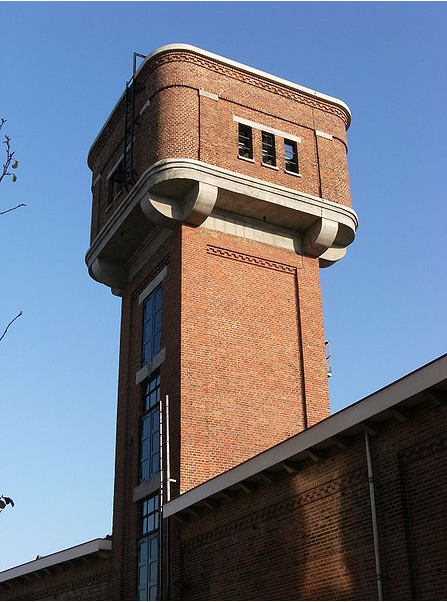
De Museumfabriek (formerly Jannink Museum of Textiles and Social Life and TwentseWelle) is a museum in Enschede, Twente in the Netherlands. The new museum is located partly in a renovated Jannink textile factory, in reference to Enschede's textile history, and partly in an adjourning new building, designed by the Amsterdam-based firm SeARCH. The project architect was Bjarne Mastenbroek. It is an Anchor point on the European Route of Industrial Heritage.
Context
Munsterland, the area of land that straddles the German Dutch border was known for cotton. The soil was not fertile and from the 16th century additional income was gained from flax production to make linen, which was woven into a rough sail cloth. With the 19th century Bocholt was producing fustian (tree silk), a compound cloth of linen warp and cotton weft. This was exported. The textile merchants then established cotton mills that exploited these skills and trade links.
The Enschede fireworks disaster of 2000 devastated Roombeek. So it was decide to house three collections on the Jannink mill site:
Collections
Jannick museum
Jannink Museum focuses on life and work in Twente. The textile sector has dominated the lives of the poor for over 200 years- showing the lives of the linen handloom weavers working from home, and all the stages of industrial life there after.
Natuurmuseum Enschede
Is the natural history collection
Van Deinse Instituut
is involved in researching the past and present of Twente. It is located in Enschede and studies the regional culture, folklore, language, cultural history and landscape of Twente. It also collects, maintains, studies and displays an extensive collection of material from the history of Twente, with a full-size historic Twents Lös Hoes (open house, a farm house without separate rooms, where both livestock and humans lived together) as one of its main attractions. The museum has designated a specific part of its premises for the Twentse Taalkamer (language room), where visitors may become acquainted Twentse language.
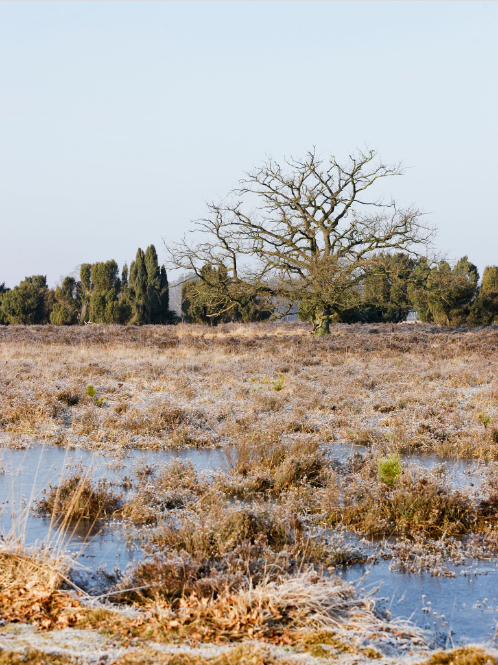
六、历史文化
Pre-industrialisation
The early history of Enschede is largely unknown, but a settlement existed around the Old Marketplace in early medieval times. The name of this settlement is mentioned as Anescede or Enscede meaning either "near the border" (with Bentheim) or "near the Es" and sported a church, a marketplace and a fortified aristocratic house.
Enschede was granted city rights around 1300 which were confirmed in 1325 by Bishop Jan III van Diest and henceforth was allowed to protect itself with a wall. Because a stone wall was too expensive (since stone had to be imported), Enschede had a system of ditches, palisades and hedges instead, which is still reflected in the street-names Noorderhagen and Zuiderhagen (North Hedge and South Hedge, respectively). The city plan of this era is still recognisable in the street-pattern. The city was spared destruction in 1597 at its capture during the Eighty Years' War when after a short siege, the Spanish garrison surrendered the city and the defences were razed.
Because the medieval city was largely built of wood and stone houses were the exception, fire was a constant risk and a series of fires in 1517, 1750 and again on 7 May 1862 earned the people from Enschede the nickname Brandstichters (arsonists).
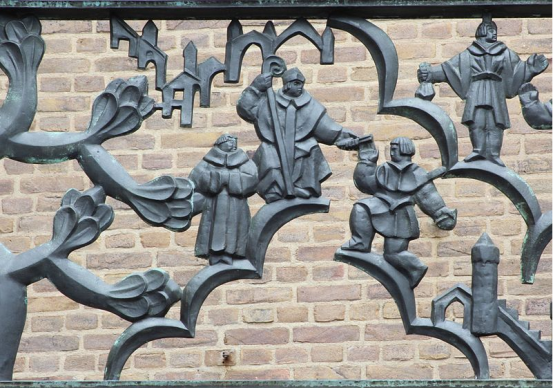
Balcony of the town hall. Enschede receives city rights
Industrialisation
The last fire coincided with the start of the growth of the city into a large production center of textiles, originally as a cottage industry, but since the start of the 19th century on an industrial scale, especially the manufacture of bombazijn (a mixture of cotton and linen) proved a successful export. One such factory to have produced textiles in the late 19th century is the Hardick & Seckel Factory.
The industrialisation stimulated a large increase in population, which by 1894 had reached an estimated 18,267: nineteenth-century urban growth was at first rather chaotic. The names of the slums (like De Krim and Sebastopol) are still notorious, although they have long since been torn down. In 1907 the laissez faire mentality was dropped and Enschede was the first city in the Netherlands to draw up an official expansion-plan, incorporating the surrounding municipality of Lonneker.
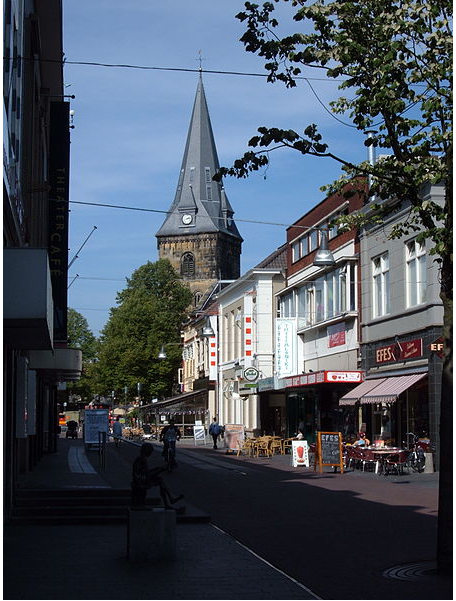
Langestraat in Enschede, with the Grote Kerk in the background
World War II
During the Second World War Enschede was one of the first Dutch cities to be captured by German troops, being the city closest to Germany. Resistance members helped many of the Jews from Enschede to hide on farms in the vicinity. Out of approximately 1300 Jews in Enschede, 500 were saved (38.5%), compared to less than 20% in the rest of the Netherlands. This higher survival rate is attributed to three members of the Jewish Council of Enschede, Sig Menko, Gerard Sanders and Isidoor Van Dam who took the initiative, against the advice of the Jewish Council of Amsterdam, of urging their community to go into hiding and not to answer the call-up of the Germans for "labour in the East".
Enschede was bombed on several occasions, most notably on October 10, 1943 and February 22, 1944. During the first raid the nearby airport (then Fliegerhorst Twente) was a target of opportunity for the VIII Bomber Command during a raid on rail- and waterways in Münster.[10][11] 141 people died and many houses were damaged. The latter mission named Enschede as a target of opportunity during Big Week after bombers had been recalled due to adverse weather.
The end of the industrial age
In the 1970s the textile production in Enschede came to a halt, due to fierce competition from mainly the Far East. This had a profound effect on the populace. Enschede became one of the poorest municipalities in the Netherlands and went bankrupt. Large areas of industrial wasteland came to mark the city. With the support of the national government, this property was acquired and rebuilt. The city center was rendered a car-free zone.
In 1961 it was announced a third technical university would be founded, placed on an estate on the western border of Enschede. This green campus called Drienerlo was donated by the city of Enschede. Building was complete in 1964, when the first and only full-facility university of the Netherlands was realised.
On 13 May 2000, a fireworks storage depot in Enschede exploded, destroying part of the neighborhood of Roombeek and killing 23 people, including 4 firemen. In 2001 a referendum confirmed the proposal of the city council to expand the built-up area into the Usseler Es, an area of historic cultural significance and of geological importance, as it was here that the Usselo horizon was discovered. The renovations at Roombeek were finished in the year 2012. The place where the factory used to be is now a monument.
Monument commemorating the 2000 fireworks disaster. The inscription says, "The vanished house between heaven and earth."
七、其他信息
Religion
The largest religion in Enschede is Christianity with 34.9% of the population being Christian.
Enschede has a large Assyrian community, the first Assyrians came to Enschede in the 1970s, primarily from Turkey (Tur-Abdin). That is why there are today three syriac orthodox churches in Enschede which meets the spiritual needs of the approximately over 10'000 Assyrians of the city.

Research, education and health care
The Universiteit Twente (University of Twente), a university with mostly technical studies, is located in Enschede. It is one of the four technical universities in the Netherlands (besides Delft University of Technology, Eindhoven University of Technology and the Wageningen University and Research Centre). The Universiteit Twente is also the only large-campus university in the Netherlands.
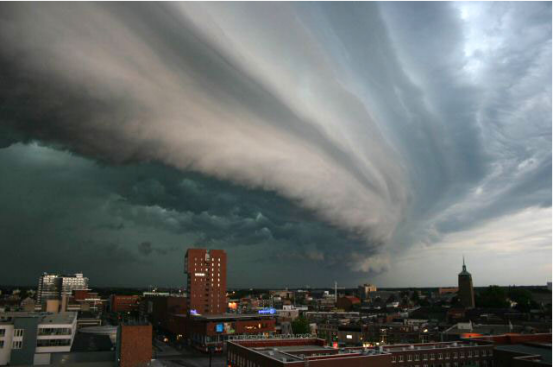
A shelf cloud associated with a heavy or severe thunderstorm over Enschede, Netherlands
The university has courses in pure technical studies such as Applied Physics, Applied Mathematics, Mechanical Engineering, Electrical Engineering, Chemical Engineering, Informatics/Computer Science and Industrial Engineering and also offers study programmes in Communication, Psychology, Economic Sciences, International Business Administration, Public Administration, Applied Medicine and Biomedical Technology; the latter attract a broader public. Since 2006, the programmes of European Studies, Advanced Technology, Creative Technology and ATLAS University College have been added to the university's offerings.
Enschede is also home to one of the three campuses of Saxion University of Applied Sciences (Saxion Hogeschool Enschede), a polytechnical school offering internationally recognized Bachelor's degrees and Master's degrees in a wide range of fields, including engineering, economics, social work, investigations and health care.[14] The other campuses are located in Deventer and Apeldoorn.
The Faculty of Geo-Information Science and Earth Observation of the University of Twente, with former name International Institute for Aerospace Survey and Earth Sciences, (known by its abbreviation ITC) runs MSc, Master's, Diploma and PhD courses in Geo-Information Science for developing countries. Students from all over the world attend the ITC. Enschede also has an academy of arts and design combined with a conservatory named ArtEZ.
The Medisch Spectrum Twente (MST) hospital is one of the largest top-clinical hospitals of the Netherlands and features important tertiary care departments, fulfilling a supraregional role. It includes a level I trauma center as well. The hospital is strongly involved in higher medical education, with up to 300 medical students following their internships in the hospital at any given time, closely working together with the University of Twente's Technical Medicine program training a new type of technically specialized doctors.
Culture
There are several museums in Enschede, among them the Rijksmuseum Twenthe for art. A museum of natural history and a museum dedicated to the history of the textiles industry, both closed in January 2007, have merged, and have reopened in April 2008 in new premises on a new location under the name TwentseWelle (Source/Well of Twente). The new location is situated in Roombeek, where a fireworks disaster took place in 2000. The new museum is located partly in a renovated old textile factory, in reference to Enschede's textile history, and partly in an adjourning new building, designed by the Amsterdam-based firm SeARCH (project architect: Bjarne Mastenbroek). Besides museums there are also several art spaces, the most prominent being Villa de Bank and TETEM. The latter focuses on art and technology, and aims to be accessible for a wide public. Enschede is also home of The Netherlands Symphony Orchestra.
In December 2012, the Serious Request action from national radio station 3FM took place in Enschede, which collected more than 12.2 million euros (almost US$16.2 million).
Sports
Enschede's association football club is FC Twente. Twente were the 2010 Eredivisie champions but were relegated to the second-tier league, the Eerste Divisie, after the 2017-18 season. Since the 2019–2020 season, they are back in the Eredivisie.
The oldest marathon of the Netherlands, and the second oldest of Europe, is the Enschede Marathon. The student rowing club D.R.V. Euros has produced several national champions and one Olympic Champion.[citation needed] DOS-WK played until 2006 in the highest competition of korfball, the 'Korfbal League'.
Enschede (Old Church to University) is the final stage of the Batavierenrace, a footrace relay beginning in Nijmegen, contested mostly by university student teams and claimed to be the largest relay races in the world, with 8000 participants. Enschede built the second indoor speed skating arena in the country, IJsbaan Twente.
八、联系方式

Mayor Onno van Veldhuizen (D66)
053 481 8010
o.vanveldhuizen@enschede.nl
Onno van Veldhuizen @OnnovVeldhuizen
Onno van Veldhuizen moet opstappen @onnovanveldhuizenmoetweg
Phone number
Within the Netherlands: 14 053
From abroad: +31 53 4818181.
Town hall and City Archive
Address: Langestraat 24
Postal Address:Postbus 20, 7500 AA Enschede
https://www.enschede.nl
Twitter Gemeente Enschede @Gem_Enschede
Gemeente Enschede @gemeenteenschede
